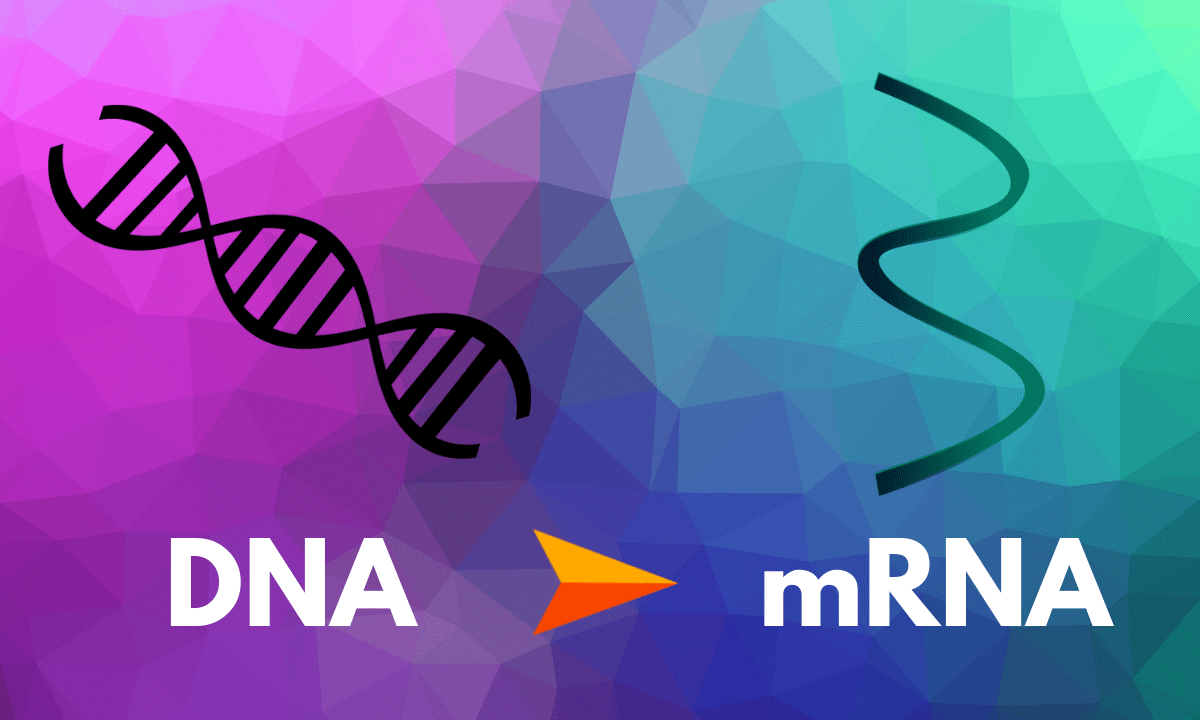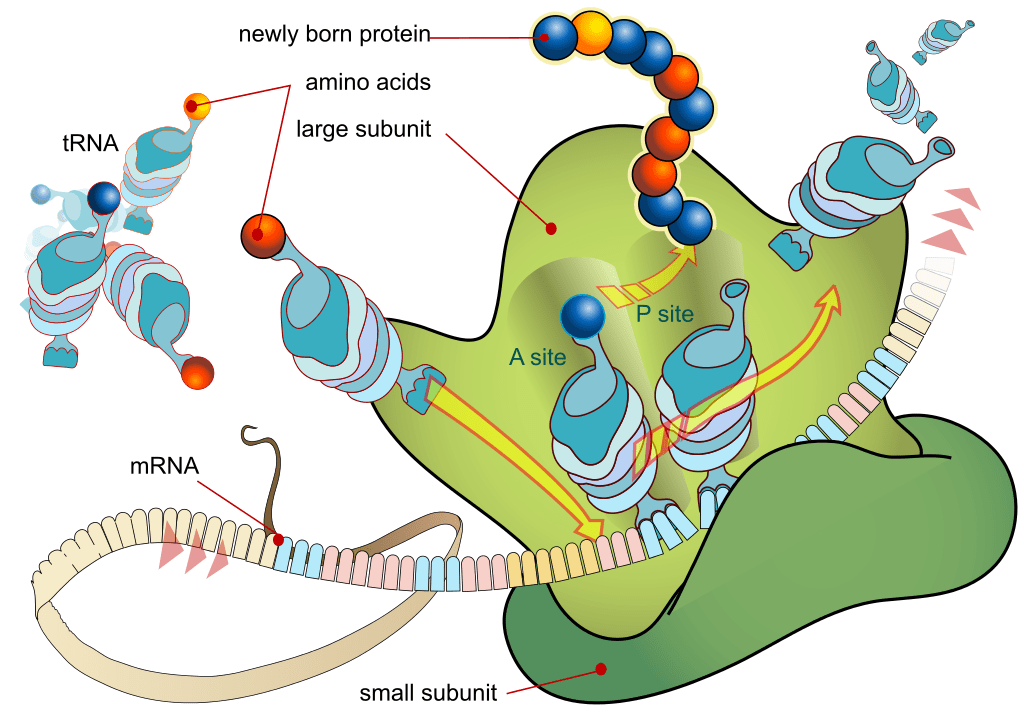Transcription
ScienceTopping | Sept 5, 2021
For the sake of simplicity, transcription is the second step in protein synthesis. From the scientific approach,
transcription is a process by which DNA is converted into messenger RNA (mRNA).
DNA is a double-stranded molecule,
while mRNA is a single-stranded molecule. In detail, DNA is the smallest unit of genetic material, making up genes.
 DNA is transcribed into mRNA during transcription.
Why transcription is needed? Why do the double-stranded DNA need to be converted into single-stranded mRNA?
DNA is transcribed into mRNA during transcription.
Why transcription is needed? Why do the double-stranded DNA need to be converted into single-stranded mRNA?
This is
because the double-stranded DNA is relatively unreactive. For protein synthesis to occur, the single-stranded mRNA is more
reactive than DNA, as tRNA anticodons need to bind to their complementary codons on the mRNA in the last phase of protein
synthesis — protein translation.
Stage 1
Hydrogen bonds between two polypeptide strands of DNA are broken by
helicase enzyme in the nuclues.
Stage 2
The double helix structure of DNA then unwinds, producing two
polypeptide strands. One of the two strands contains the gene, called sense strand, while the other is called antisense
strand.
Stage 3
The sense strand binds with free active nucleotides via complementary binding.
Stage 4
RNA polymerase enzyme joins the free active nucleotides to the sense strand, producing DNA molecule
(double helix).
Stage 5
The antisense strand is the mRNA. The mRNA then moves out from the nucleus via nuclear
pores, ready to be used in the next step of protein synthesis, translation.



